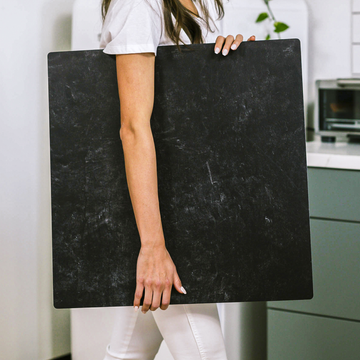Most tips about food photography backdrops focus on colors and patterns-marble for minimalism, wood for warmth, slate for mood. But if you want to elevate your images from ordinary to unforgettable, it’s time to look closer-literally. The true magic lies in the details that your eyes might miss but your camera never does: micro-surface texture and reflectance.
It’s easy to overlook the impact your backdrop has on each photograph. Yet, these silent surfaces shape the light, set the mood, and even kindle a craving in anyone scrolling past your photos. Let’s peel back the layers on what makes a backdrop truly transformative in food photography.
The Secret Life of Micro-Texture
Think of your backdrop as more than just a stage; it’s a partner working behind the scenes. Even on a near-invisible scale, the gentle texture of a surface can change everything about your photo:
- Light Scattering: A surface with subtle grain-like brushed cement or aged wood-breaks up reflected light. This softens shadows and tempers glare. Your food gains dimension and looks more appetizing.
- Shadow Diffusion: Micro-texture blends the edges of shadows, making transitions appear gentle and natural. Super-smooth backdrops often create harsh, distracting highlights and flatness.
- Grip for Styling: Textured surfaces keep props like plates and utensils from sliding around, so you can build complex setups with confidence.
Beyond Matte and Gloss: The Art of Reflectance
Photographers often debate matte versus glossy, but the reality is more nuanced-reflectance is a spectrum. This is where the science of how surfaces reflect light, known as the Bidirectional Reflectance Distribution Function (BRDF), comes in:
- Pairing Food and Backdrop: Shiny foods (like pastries or glazed meats) pop against a matte backdrop-keeping attention on those luscious details. Matte foods (think rustic bread) can benefit from backdrops with a hint of sheen to introduce sparkle without distraction.
- Subtle Color Effects: High-quality surfaces use pigments that scatter colored light into the shadows, gently warming a crust or brightening the green of fresh herbs in ways that presets just can’t mimic.
The Emotional Power of Texture
Every surface tells a story, and texture is its language. Our brains are wired to connect food with memories-a well-used butcher block conjures family dinners, while smooth marble whispers French pâtisserie sophistication. Even gentle imperfections, a concept celebrated in wabi-sabi, infuse your shots with authenticity and warmth.
How to Choose Your Ideal Surface
- Feel before you buy: Run your hand across the surface-texture should be gentle but present.
- Test reflectance: Snap a quick photo in natural light. Does the backdrop add nasty glare or distracting shine? Or does it keep the focus on your dish?
- Think narrative: Does the backdrop evoke bakery mornings, farm-table comfort, or high-end minimalism?
- Consider practicality: Surfaces should clean easily-look for quality that stands up to syrup spills or coffee stains.
Working With Micro-Texture: Pro Tips
- Better for Multi-Shot Techniques: Textured backdrops help hide digital artifacts when stacking exposures for crisp results.
- Real Color Rendering: Professional-grade surfaces protect against color cast, so your strawberries stay ruby red and parsley refuses to go gray-green.
- Surfaces that Last: The best balance comes from easy-wipe construction that keeps subtle texture without becoming a stain magnet.
The Big Picture
Your choice of backdrop isn’t just about what looks nice-it’s about how your photos feel. Micro-texture and reflectance work together to tell stories, shape light, and make your food look irresistibly real. The next time you plan a shoot, challenge yourself to look beyond color. Ask if the surface supports your style, grounds your story, and helps your food shine.
Products designed for creators, like Replica Surfaces, are engineered with these principles in mind, enabling everyone-from pros to home chefs-to capture food at its most crave-worthy. Remember, every photo starts with the right foundation. Choose wisely, and your camera-and your viewers-will notice the difference.



